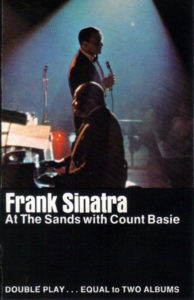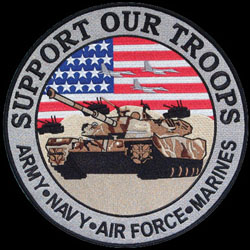“How could they do a thing like that?”—Frank Sinatra
That was the question that a puzzled, retired Frank Sinatra posed to his guests when word came in 1996 that the famous Sands Hotel and Casino was about to be closed and demolished. Comedian Jerry Lewis was among those conversing with his host and longtime friend when the fate of the classic Las Vegas property subsequently entered the conversation. Sinatra was hurt by the news, personally affronted by the thought of the once glitzy playground becoming nonexistent. Looking back on it now, nearly twenty years after demolition crews reduced the iconic building to a pile of dust and debris, one could almost identify with Sinatra’s feelings.
Today, the ultra-modern Italian-themed Venetian Hotel stands in place of the Sands, and with the exception of a number of tribute musical acts as well as honorary street markers and plaques, very little evidence is left in terms of a long, swinging period that saw hundreds of thousands of visitors flocking into the showrooms of Las Vegas, to see legendary entertainers like Sinatra and his fellow contemporaries. With the closing and demolition of the nearby Riviera Hotel in the past year, another historic casino that harkened back to the heydays of The Rat Pack and the like, it seems as though that certain era of the popular desert gambling town is finally coming to a close.
Sinatra’s disheartened response to the Sands closing probably wasn’t only due to the fact that he performed there for a number of years; for a long period, the Sands was considered his base of operations while residing in Vegas. Becoming a partner in the early days of the facility by purchasing a percentage of ownership during the construction stages, Sinatra first performed on stage in the hotel’s ornate Copa Room in 1953.
With his popularity mounting to a comeback due to his recent Academy Award win for his part as Maggio in “From Here To Eternity,” Sinatra would soon make the Sands Hotel the place to be for gamblers and the showbiz elite alike. Performing there three or four weeks out of each year, his appearances brought extraordinary business to the property.
Having virtual carte blanche within the resort, Sinatra saw fit to preserve this period of his career with audio documentation. With the recent formation of his own recording label, Reprise, and realizing the viability of a live album on the market, Sinatra trucked out his producer Sonny Burke from Los Angeles with mobile recording units to capture him in performance at the Sands. Although Sinatra would appear a vast number of times between 1953 and 1967, action from the stage of the Copa was only recorded three times, in the early to mid 1960s. The apex of his performing career, these memorable stands today cultivate a large portion of his legend as an entertainer.
The first of these mobile recordings came in November of 1961. With the idea of releasing a live album in mind, tentatively titled “The Sands Story,” several evenings of performances were recorded with the idea of splicing the best coverings of each piece of material together to create one flowing performance for record. Sinatra even posed for a photo shoot in relation to the forthcoming album, appearing in his trademark hat and fedora with a sign that read “I Am An American Singer — Please Return Me To The Sands Hotel” along with a hasty cartoon American flag. Besides this photo shoot as well as the drawing of a cover concept, the album was unceremoniously shelved.
While selected cuts from one evening of this 1961 appearance were first made available publicly on the bootleg early 1990s compact disc release “Saloon Singer,” it wouldn’t be until the release of the 2006 deluxe box set “Sinatra: Vegas” that a complete version of another evening’s performance would be available to a listener. Those who needed an idea as to what Sinatra sounded like nearing the very prime of his career would need to go no further.
Backed by the Antonio Morelli Orchestra (the Sands Hotel house band that plays the classic arrangements perfectly, note-for-note), his performance features a mixture of his recent work for Reprise combined with earlier (audience favorites) material recorded while working for Capitol Records, including selections from his then-recent albums with Billy May (Swing Along With Me) and Sy Oliver (I Remember Tommy) to readings of earlier hits from albums with Nelson Riddle, and even a parody of “River, Stay Away From My Door” with lyrics rewritten by Sammy Cahn in tribute to the Sands entertainment director Jack Entratter. Some twenty songs in all, it is not to be missed.
After recording several evenings of performance by The Rat Pack principles at the Villa Venice Supper Club in Chicago in 1962, Sonny Burke followed Frank, Dean Martin, and Sammy Davis JR. back to the Sands in September 1963 to record for another prospective album release. With Dean Martin’s week-long set coming to an end and Frank’s about to begin with a short overlap, the spontaneous decision was made to perform together for a few evenings, with the addition of their friend “Smokey The Bear,” Sinatra’s nickname for Davis. For those few nights, below the towering script of the Sands marquee, the signage read “DEAN MARTIN. MAYBE FRANK. MAYBE SAMMY.” While film footage has surfaced in recent years of The Rat Pack onstage at the Sands in both 1960 and 1963, these few September nights serve as the only audio ever captured of the famous trio at work in Vegas.
Since Sinatra is at work with his two friends, his set list is much shorter, but consists mainly of his most recent work for Reprise at the time, with (accompanied again by the Morelli orchestra) “I Only Have Eyes For You” and “Please Be Kind” from the Basie album, “My Heart Stood Still” and “I Have Dreamed” from his “Concert Sinatra” album with Nelson Riddle, a performance of the then recently written “Call Me Irresponsible,” capped by a full tilt performance of the Billy May arrangement of “Luck Be A Lady” from “Guys And Dolls.” The tune would soon become synonymous with Las Vegas and the chance of gambling.
With the exception of a nearly ten minute long comedy bit between Sinatra and Martin that was included on the two-record 1965 career survey “A Man And His Music,” the rest of the performance would go unreleased for more then three decades. It first appeared on the market as a bootleg release in the 1990s, “Indian Summer at the Sands,” featuring the complete performance from September 6th of the engagement, before an official release, “The Rat Pack: Live at the Sands,” arrived in stores via Capitol Records in 2001. This release features performances from multiple nights edited together to create one excellent (and highly comedic to boot) listening experience.
What would eventually become the first (and for many years, one of only two) live Sinatra album would finally come to fruition in the early months of 1966. Sinatra had been working intermittently with the Count Basie Orchestra over the previous months, and decided to bring the entire band with him to Las Vegas to accompany him for his overlong stay at the Sands, stretching across January and February. Once again in tow with the mobile, Sonny Burke would record many shows over this long schedule, retiring to the editing room following the completion of the gig to assemble an album from the massive amounts of readings recorded. Released in July of 1966, the twenty-two tracks of “Sinatra at the Sands” form a signature (and often imitated) performance that runs high on overall definition as to how well the Sinatra-Basie pairing worked.
Combining arrangements of new songs (“It Was A Very Good Year,” “The Shadow of Your Smile,” “The September of My Years”) with fresh, stringless arrangements of Sinatra classics (“Come Fly With Me,” “I’ve Got A Crush On You,” “I’ve Got You Under My Skin”) along with new arrangements of older songs in the Sinatra canon (“Street of Dreams,” “Where Or When,” and “You Make Me Feel So Young”), the album serves as the ultimate portrait of Sinatra in regards to his career heights of the 1960s as well as his relationship to the town of Las Vegas itself. High on atmosphere, the album was a resounding success.
With the release of the “Sinatra: Vegas” box set, audiences were treated to a supplemental concert from this 1966 stand that was previously unreleased. While the original LP album contained various performances culled from the whole of the two month stand, disc two of the Vegas box set contained a single evening’s unedited performance, allowing audiences to hear slightly alternate versions of the songs from the original LP as well as camaraderie between Frank and the audience previously unheard. Furthermore, a third full concert was made available in CD form in Sinatra’s centennial year, offered as a gift by the Jack Daniels company when purchasing a deluxe bottle of that year’s “Sinatra Select” Jack Daniels whiskey. For those used to the original album, listening to these two full unedited alternate concerts makes for a surprising, and eye-opening experience.
Unfortunately, the relationship between Sinatra and the Sands would end acrimoniously not long after the recording of the Sands album. Following a change in management in 1967 and new stipulations as to how much Sinatra could gamble in the casino, Sinatra (in true fashion) exhibited his occasional short temperament.
He wrecked a golf cart by driving it through the window of the hotel’s coffee shop, where his target, the casino manager, was seated eating. After a physical exchange of blows that left the manager punched in the head and the entertainer with two teeth knocked from his mouth, Sinatra swore his severance of ties with the hotel, taking his voice and entourage down the road to Caesars’ Palace, would he would maintain a residency until 1982. He would then move downtown to Fremont Street and his friend Steve Wynn’s newly refurbished Golden Nugget for a few years until returning to the Strip in the late 1980s/early 1990s with stays at both Bally’s (the former MGM Grand) and the newer MGM Grand.
Although he would never return to the Sands in Las Vegas before its implosion in 1996, it was quite fitting that one of his final American concert appearances would take place in a building with a “Sands” marquee, this being the distant Atlantic City sister hotel of the Las Vegas property, where he would perform often throughout the early 1990s. Television commercials at the time in the New York area featured a silver-haired Sinatra resplendent in his tuxedo, beckoning to television viewers “…the Sands! Where else?”
Indeed, where else. While both Sinatra and the Sands are gone today, we can admire the Chairman for his perseverance in capturing a moment, as well as credit those in charge at the Sinatra enterprise for assuring that these concerts would see the light of day. Although Sinatra didn’t release the majority of these recordings as intended at the time, they’re now here for whole new set modern audiences to experience (both on compact disc and through digital download), a door into a bygone time of classic music and entertainment that can be walked through and enjoyed again and again.
Until next time, Sinatra lovers!
Jerry Pearce is an amateur singer in the vein of Frank Sinatra, Perry Como, and Dick Haymes and has released two discs of standards music, Crossroads in 2010, and One Summer Night in 2016. Samples of his music can be heard on his YouTube Channel. To purchase his CDs use the form box below.
[si-contact-form form=’3′]

 October 18th, 2016
October 18th, 2016  CEO
CEO 
 Posted in
Posted in  Tags:
Tags: 



